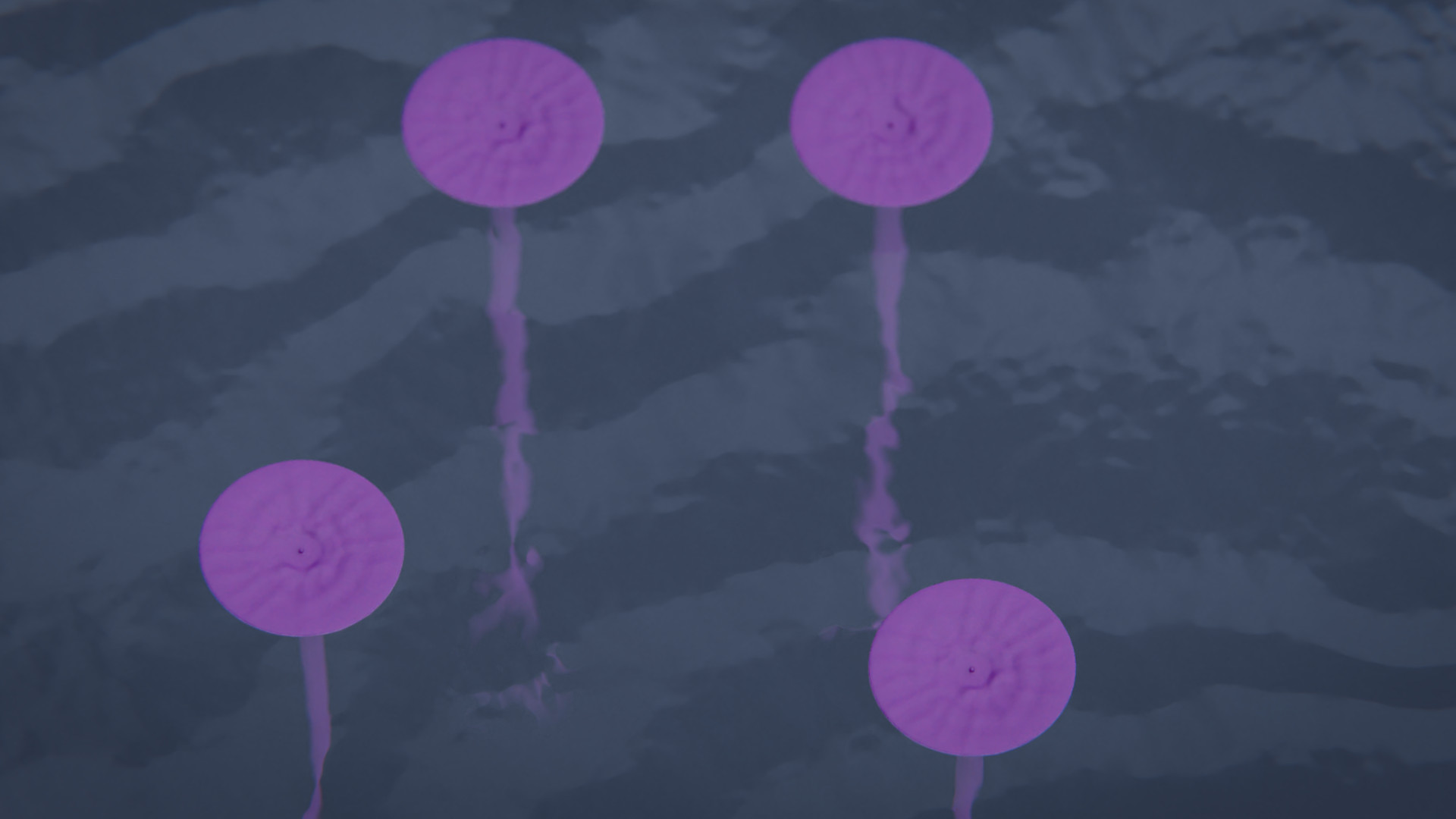High Stem
A few high stems preparing for their reproductive event by getting as much sunlight as possible. [Creature design by Xord]
Basic Information
Anatomy
For much of its life a high stem looks a lot like the ancestral boseo, but with a thicker stalk. They have a rhizoid and a single circle shaped photosynthetic structure at the top of each stalk. The stalk however slowly builds up gas which begins to make it float. This floating is an integral part of the organism's lifecycle. Another interesting aspect is that the stalk develops a small bulb at the center of the leaf. This will burst during the final stage of the reproductive event, and is essentially a valve that will let internal gas and gametes be expelled.
Genetics and Reproduction
While it is floating will expel reproductive cells from it's reproductive tube and bulb, after doing so it will have also expelled all its buoyant gas. This is timed to happen around the local vernal equinox, and the gametes will then float in the water, hopefully to combine with the gametes of other high stems, then the new "seed" will sink to the bottom, and if there is enough light grow.
Growth Rate & Stages
A high stem stand starts as a single fertilized seed. This settles to the bottom of the sea, and if there is enough light it will send up a small stalk, and begin growing a rhizoid "root" system. Just like boseo it will then send up new stalks from the rhizoid if there is enough light. At this point gas begins to build up in the largest stalks, and about 10 days before the vernal equinox the largest stalks will float up to the surface. Over the next 10 local days the high stalks will use extra light from being at the surface to go into a frenzy of production of gametes, which culminates in the release of the gametes and the gas in the stalk, causing the now dead stalks to sink to the bottom, fertilizing the area, and letting their gametes combine in a rather spectacular event of broadcast spawning. A single stalk can release tens of thousands of gametes, although nearly all of them will fail to produce a new stand. The original stand often does not make it much past its first release of stalks from the rhizoid. With greatly diminished photosynthetic capacity it is less able to make up for losses due to herbivores, but if it does survive it may then continue to reproduce for several years.
Ecology and Habitats
High stems are an occasional sight just about anywhere that the water is shallow enough to allow for photosynthesis. They are not overly tolerant of the cold, so they are uncommon near Arctica, and the frigid water near the northern ice cap kill any high stems that float into the region or that attempt to grow there.
EXTINCT
Genetic Ancestor(s)
Genetic Descendants
Scientific Name
Radixcelsis supernatet
Origin/Ancestry
Retinalphyta
Geographic Distribution
Remove these ads. Join the Worldbuilders Guild











Comments